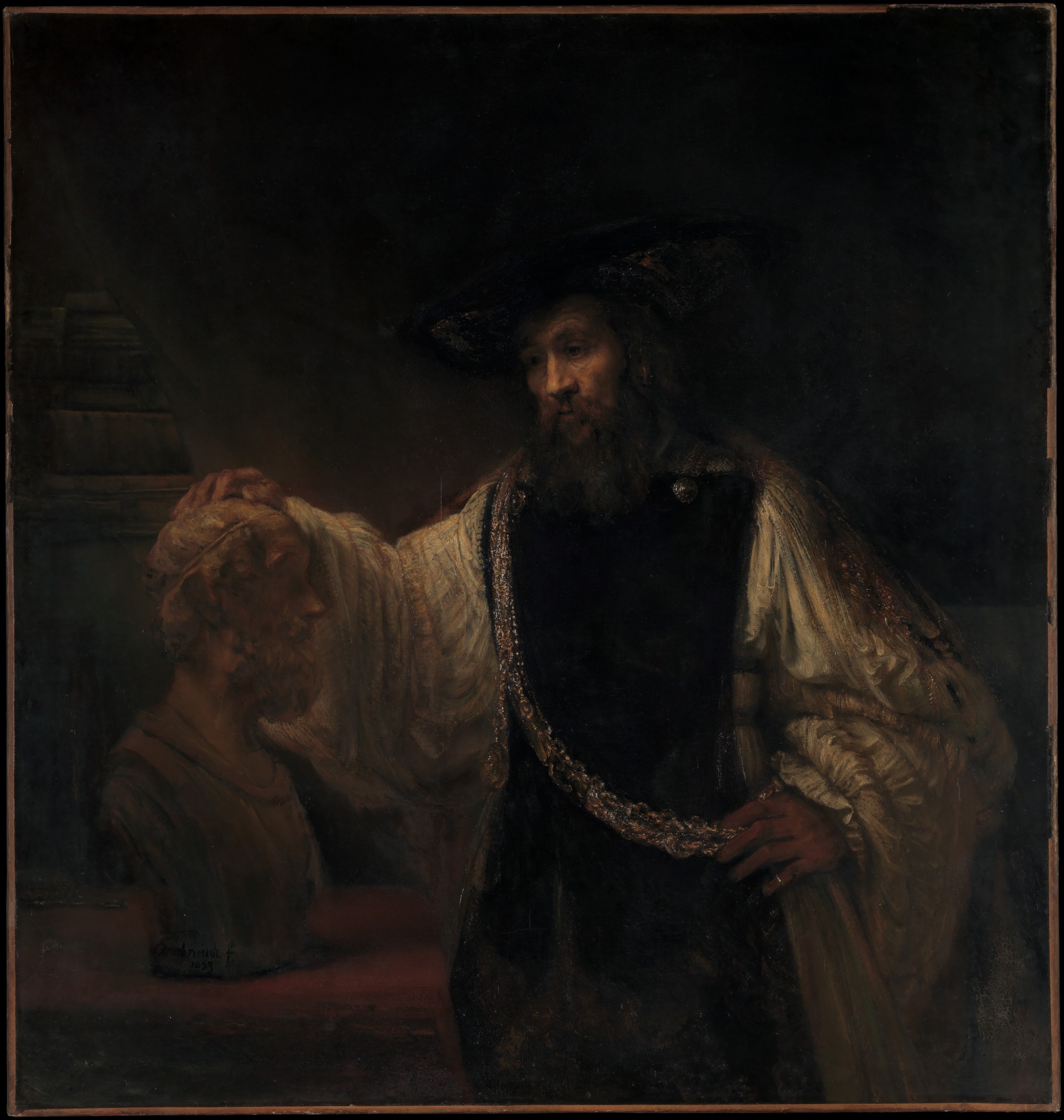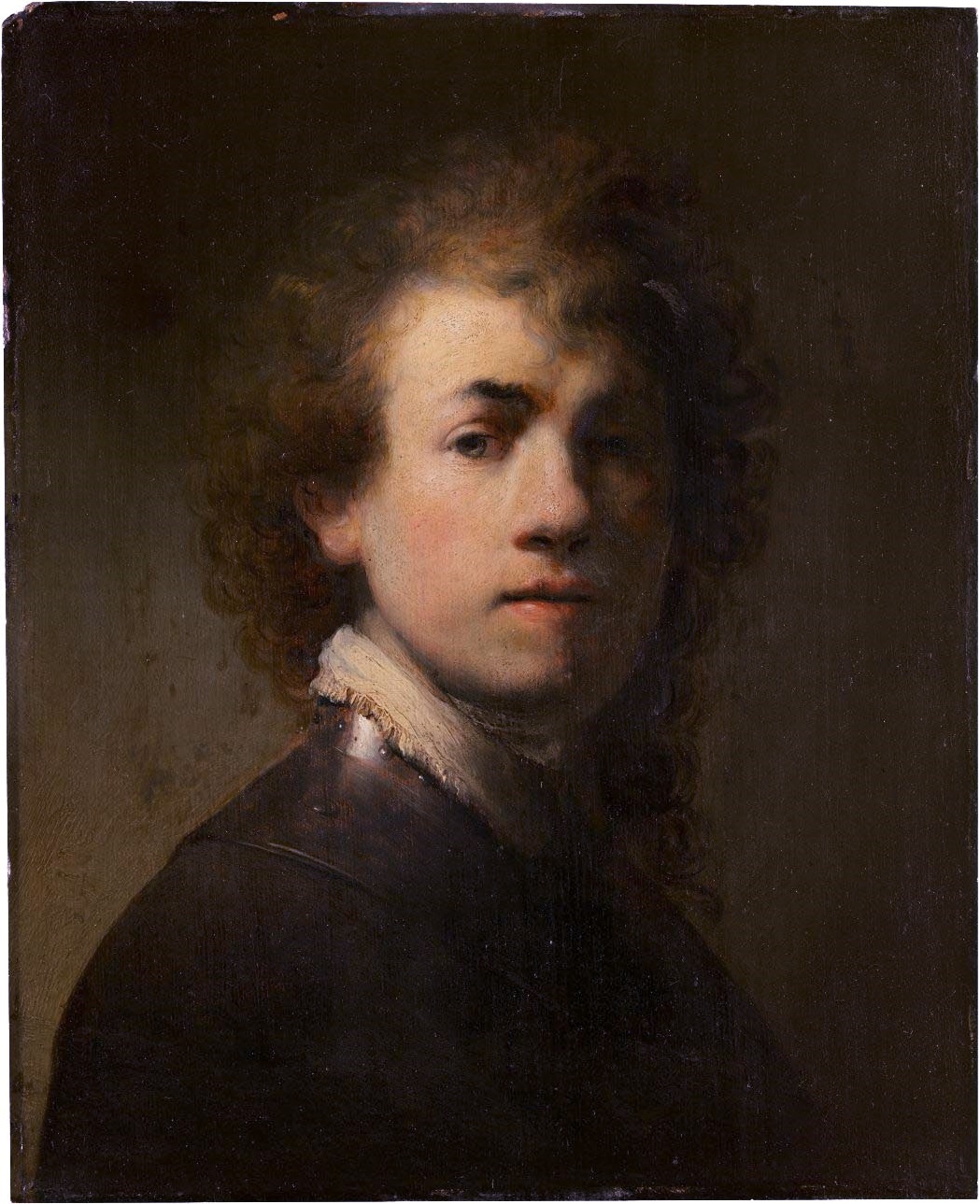Aristotle (384–322 BCE) rests his hand reflectively on a bust of Homer, the blind epic poet of the Iliad and the Odyssey. A medallion representing Alexander the Great, whom Aristotle tutored, hangs from the heavy gold chain. The philosopher contemplates material rewards as opposed to spiritual values, with the play of light and shadow on his features suggesting the motions of his mind. Painted for the great Sicilian collector Antonio Ruffo, the picture also refers to Aristotle's comparison of touch and sight as a means of acquiring knowledge.
Ruffo was an avid collector; at his death he had 364 paintings, including a work by Van Dyck, Saint Rosalie Interceding for the Plague-Stricken of Palermo. Though he went out of his way to collect works by famous masters, Ruffo rarely left Messina. He ordered this work through an agent, Giacomo di Battista, who did business with Cornelis Gijsbrechtsz, a wealthy Amsterdam merchant. Shortly after its delivery, the picture was recorded in Ruffo's inventory (1657) as a half-length figure of a philosopher, possibly Aristotle or Albertus Magnus.
Ruffo also ordered companion paintings from Rembrandt. They are the Alexander the Great of 1661 (now lost) and the fragmentary Homer (Mauritshuis, The Hague), dated 1663.
If you enjoy Rembrandt's art, you should visit the artist's house in Amsterdam! Have a glimpse at the article "8 Reasons To Visit Rembrandt House in Amsterdam".


 Rembrandt van Rijn
Rembrandt van Rijn